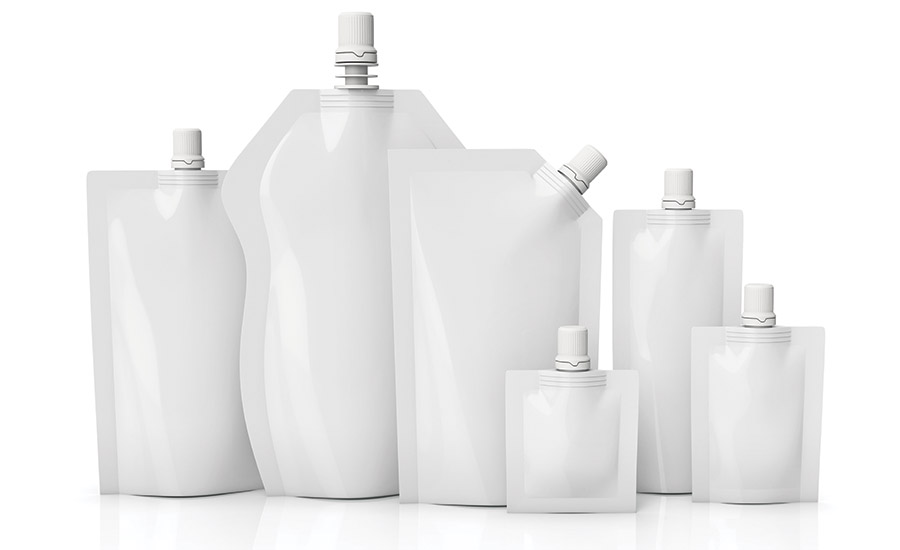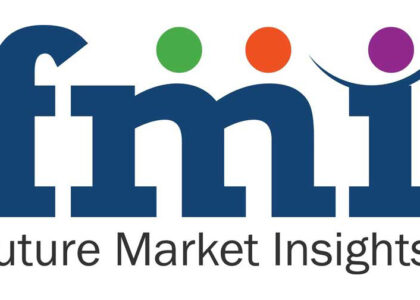Flexible plastic packaging sales in the US are surging due to increasing demand for convenience, quality, and sustainability. Technological advancements and innovation drive the development of new and improved solutions catering to consumer and business needs. The market is expected to reach $45.16 billion by 2033, driven by increasing demand for convenience, quality, and sustainability.
Sales of flexible plastic packaging solutions in the United States are estimated to be valued at US$ 34,937.9 million in 2023. The business is projected to reach US$ 45,161.7 million by the end of 2033. The revenue is anticipated to expand at a CAGR of 2.6% in the evaluation period 2023 to 2033.
The United States’ flexible plastic packaging business exhibited a CAGR of 1.5% during the historical period from 2018 to 2022. It reached US$ 34,052.2 million in 2022 from US$ 32,054.9 million in 2018.
Convenience and Quality Drive Demand for Microwaveable and Oven-Ready Flexible Plastic Packaging
The demand for microwaveable and oven-ready flexible plastic packaging for ready-to-eat meals is rising. This niche caters to consumers looking for convenience without sacrificing quality.
Flexible plastic packaging designed for microwave and oven use often includes features such as venting options and specialized films that help distribute heat evenly. These can also ensure that the food cooks consistently and retains its quality.
Microwaveable and oven-ready packaging allows consumers to portion and heat food as needed, reducing food waste by minimizing overcooking or leftovers that can go uneaten. This niche includes various meal types, from frozen entrees to pre-marinated meats, vegetables, and even desserts. Packaging designs must cater to different culinary needs and cooking methods.
Innovation in Flexible Packaging
Leading consumer brands are increasingly using flexible packaging. Introducing new products in the flexible packaging business, such as vacuum pouches, high-temperature retort pouches, and stand-up pouches, has changed packaging trends. The addition of layers into a flexible packaging structure can lead to improvements in its functionality and economic viability.
Several converters are shifting toward using seven and nine layers of co-extrusion lines to provide more feasibility. This would be done in terms of thickness and structure with a marginally higher cost than packaging consisting of fewer layers. Another product development is to fragment the barrier layer into two thinner layers, which can serve as a backup. This can also reduce the permeation rates.
Key players in the United States flexible packaging business are continuously introducing new products that are bio-based and biodegradable. Petroleum-based polyethylene can be replaced with bio-based products such as sugarcane or potato starch.
Using synthetic biodegradable resins to produce packaging films can offer lucrative, sustainable solutions due to reduced dependency on fossil fuels. Polylactic acid (PLA), PHA, cellulose, or starch-based materials can offer new functionalities such as biodegradability.
Key Takeaways from the United States Flexible Plastic Packaging Business Study-
- The United States flexible plastic packaging business is projected to reach US$ 45,161.7 million by 2033.
- The United States’ flexible plastic packaging business is projected to surge at a CAGR of 2.6% by 2033.
- Based on product type, the films and wraps segment is expected to rise at a 2.9% CAGR from 2023 to 2033.
- In terms of end-use, the industrial packaging segment is projected to expand with a CAGR of 3.3% by 2033.
- The consumer packaging segment is estimated to witness a 2.6% CAGR in the forecast period by end-use.
Purchase this report now, to get 20+ key companies with their Revenue Forecast, Volume Forecast, Company Ranking, Competitive Landscape, Growth Factors, Trends, and Pricing Analysis.
“Exponential rise of the food and beverage sector is set to boost sales of flexible plastic packaging. The shift in consumer preference toward visually appealing and customized packaging solutions will help to increase the sales of flexible packaging solutions. In addition, the growing e-commerce and retail sectors will further propel the United States flexible plastic packaging business.” – says Ismail Sutaria (Lead Consultant, Packaging and Materials).
Competitive Landscape
- Amcor Plc
- Sealed Air Corporation
- Winpak Ltd.
- Berry Global Group, Inc.
- others
are prominent players in the United States flexible plastic packaging business. The Tier 1 players hold a 15 to 20% share in the United States flexible plastic packaging business.
Key players in the business are gaining value by developing innovations and advancements in the United States flexible plastic packaging ecosystem. They are also seeking to execute the merger acquisition and expansion strategy.
For instance,
- In October 2023, Winpak Films, Inc., a division of Winpak Ltd, purchased around 44 acres adjacent to its existing facility in Senoia (in North America) for a potential future expansion.
- In April 2023, Amcor Plc partnered with Tyson Foods, a leading food company, to launch a more sustainable package for consumer products such as flexible films.
More Insights into the United States Flexible Plastic Packaging Business Report
Future Market Insights (FMI), in its new report, offers an unbiased analysis of the United States’ flexible plastic packaging business, analyzing historical demand from 2018 to 2022 and forecast statistics for 2023 to 2033.
The study reveals growth projections based on product type (pouches (stand-up pouches, and flat pouches), bags and sacks (retail bags and sacks), jumbo bags, and other industrial bags, tubes, sleeve labels, films, and wraps (shrink films, stretch films, and wrapping and lidding films)), material (oil-based polymers (polyethylene (HDPE, LDPE, and LLDPE), polypropylene (BOPP, OPP, CPP, BOPET, PVC, Nylon, EVOH, Polystyrene, and others), bioplastics (PLA, starch-based plastics, bio-PET, bio-PE, and others)), by packaging type (VSP, MAP, and general barrier), and end use (consumer packaging (food (meat, poultry and seafood, snack food, ready-to-eat meals, frozen food, bakery and confectionery, fresh produce, dairy, and others), beverages, personal care, home care, pharmaceuticals, and others) and sub-regions.
About the Packaging Division at Future Market Insights (FMI)
The packaging division at Future Market Insights (FMI) provides an in-depth historical analysis and projections for the next ten years and covers the competitive landscape through a unique dashboard view. Ranging from packaging materials and packaging machinery to packaging designs & formats, Future Market Insights (FMI) has an exhaustive database for these industry verticals, serving clients with unique research offerings and strategic recommendations. With a repository of 1,000+ reports, the team has analyzed the packaging industry comprehensively in 50+ countries. The team evaluates every node of the value chain and provides end-to-end research and consulting services.
About the Author:
Ismail Sutaria (Lead Consultant, Packaging and Materials) has over 8 years of experience in market research and consulting in the packaging & materials industry. Ismail’s strength lies in identifying key challenges faced by the client and offering logical and actionable insights to equip the clients with strategic decision-making power.
Ismail has been an instrumental part of several transformational consulting assignments. His key skills include competitive benchmarking, opportunity assessment, macroeconomic analysis, and business transformation advisory. Ismail is an MBA holder in Marketing and has a Bachelor’s Degree in Mathematics.
Explore FMI’s Extensive Coverage in the Packaging Domain:
- The HDPE bottle market is expected to reach $53.0 billion in 2023, with a projected growth to $74.7 billion by 2033 and a 3.50% CAGR in sales during the forecast period.
- The plastic caps and closures market is expected to add $18 billion in incremental opportunities by 2033. In 2022, the market had a value of $43,602.7 million, as reported by FMI. By the end of 2033, the market is projected to grow 1.4 times its current value.
- The flexible packaging paper market is projected to achieve a 4% CAGR from 2022 to 2032.
- The plastic healthcare packaging market is expected to be worth $24,768.7 million in 2023, with a projected value of $40,306.8 million by 2033. It is estimated to experience a 5% CAGR during the forecast period.
- Sales of steel drums in Southeast Asia are expected to be worth $423.6 million in 2023, with a projected value of $835 million by 2033. The revenue is anticipated to grow at a 7.0% CAGR from 2023 to 2033.
About Future Market Insights (FMI)
Future Market Insights (FMI) is a leading provider of market intelligence and consulting services, serving clients in over 150 countries. FMI is headquartered in Dubai and has delivery centers in the United Kingdom, the United States, and India. FMI’s latest market research reports and industry analysis helps businesses navigate challenges and make critical decisions with confidence and clarity amidst breakneck competition.
Our customized and syndicated market research reports deliver actionable insights that drive sustainable growth. A team of expert-led analysts at FMI continuously tracks emerging trends and events in a broad range of industries to ensure that our clients prepare for the evolving needs of their consumers.
Contact Us
Nandini Singh Sawlani
Future Market Insights Inc.
Christiana Corporate, 200 Continental Drive,
Suite 401, Newark, Delaware – 19713, USA
T: +1-845-579-5705
For Sales Enquiries: sales@futuremarketinsights.com
Website: https://www.futuremarketinsights.com
LinkedIn| Twitter| Blogs | YouTube


